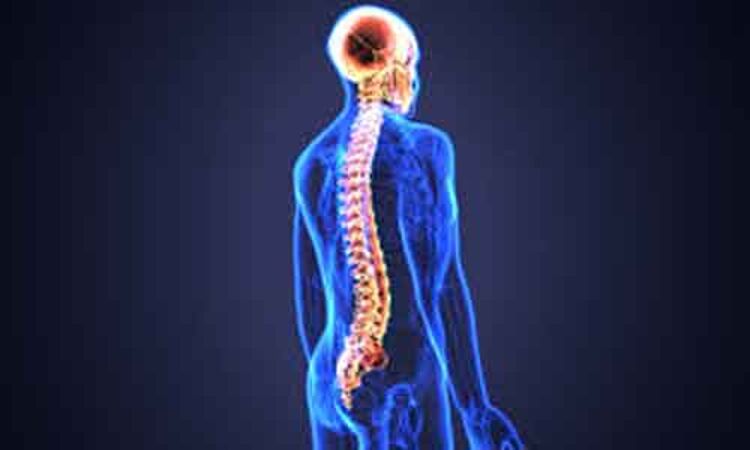- Home
- Medical news & Guidelines
- Anesthesiology
- Cardiology and CTVS
- Critical Care
- Dentistry
- Dermatology
- Diabetes and Endocrinology
- ENT
- Gastroenterology
- Medicine
- Nephrology
- Neurology
- Obstretics-Gynaecology
- Oncology
- Ophthalmology
- Orthopaedics
- Pediatrics-Neonatology
- Psychiatry
- Pulmonology
- Radiology
- Surgery
- Urology
- Laboratory Medicine
- Diet
- Nursing
- Paramedical
- Physiotherapy
- Health news
- Fact Check
- Bone Health Fact Check
- Brain Health Fact Check
- Cancer Related Fact Check
- Child Care Fact Check
- Dental and oral health fact check
- Diabetes and metabolic health fact check
- Diet and Nutrition Fact Check
- Eye and ENT Care Fact Check
- Fitness fact check
- Gut health fact check
- Heart health fact check
- Kidney health fact check
- Medical education fact check
- Men's health fact check
- Respiratory fact check
- Skin and hair care fact check
- Vaccine and Immunization fact check
- Women's health fact check
- AYUSH
- State News
- Andaman and Nicobar Islands
- Andhra Pradesh
- Arunachal Pradesh
- Assam
- Bihar
- Chandigarh
- Chattisgarh
- Dadra and Nagar Haveli
- Daman and Diu
- Delhi
- Goa
- Gujarat
- Haryana
- Himachal Pradesh
- Jammu & Kashmir
- Jharkhand
- Karnataka
- Kerala
- Ladakh
- Lakshadweep
- Madhya Pradesh
- Maharashtra
- Manipur
- Meghalaya
- Mizoram
- Nagaland
- Odisha
- Puducherry
- Punjab
- Rajasthan
- Sikkim
- Tamil Nadu
- Telangana
- Tripura
- Uttar Pradesh
- Uttrakhand
- West Bengal
- Medical Education
- Industry
Spinal cord burst stimulation fails to improve back pain-related disability following lumbar spine surgery

NORWAY: Researchers have found in a new study that Spinal cord burst stimulation fails to improve back pain-related disability following lumbar spine surgery. According to a study published in JAMA Network, there was no discernible difference between spinal cord burst stimulation and placebo stimulation in terms of back pain-related disability among patients suffering from chronic radicular pain following lumbar spine surgery.
The most prevalent cause of impairment worldwide and a key factor in seeking medical attention is low back pain. Low back pain patients continue to have poor outcomes in spite of multiple therapy options.
"After lumbar spine surgery, spinal cord stimulation is increasingly used to treat chronic pain, but robust research proving its effectiveness is missing," the authors asserted.
The goal of the study was to determine whether spinal cord burst stimulation, which involves inserting an implantable pulse generator coupled to electrodes with leads that pass into the epidural space behind the spinal cord dorsal columns, is effective in treating chronic radiculopathy in patients who have undergone surgery for degenerative lumbar spine disorders.
In order to accomplish this, 50 patients were enrolled in a placebo-controlled, crossover, randomized clinical trial at St Olavs University Hospital in Norway from September 5, 2018, through April 28, 2021. The last follow-up took place on May 20, 2022. In a randomized order, patients had two 3-month periods of spinal cord burst stimulation and two 3-month periods of placebo stimulation. During burst stimulation, the spinal cord received a series of tightly spaced, high-frequency electrical impulses. The stimuli were four spikes in a burst mode of constant-current stimuli at a frequency of 40 Hz, with an amplitude equating to 50% to 70% of the threshold for perceiving paresthesia.
The main result was the disparity among periods with burst stimulation and placebo stimulation in the self-reported Oswestry Impairment Index (ODI; range, 0 points [no disability] to 100 points [highest disability]; the least clinically relevant difference was 10 points). Leg and back discomfort, quality of life, levels of physical activity, and negative outcomes were the secondary endpoints.
Key findings of the trial:
- The mean ODI score was 44.7 points at baseline, and it decreased by an average of 10.6 points during burst stimulation and 9.3 points during placebo stimulation, yielding a mean between-group difference of 1.3 points (95% CI, 3.9 to 1.3 points; P =.32).
- Neither of the predetermined secondary results revealed a noteworthy difference.
- Adverse events occurred in 9 individuals (18%), and 4 (8%) of them required surgical revision of the implanted system.
The authors came to the conclusion that there was no notable change between spinal cord burst stimulation and placebo stimulation after the implantation of a spinal cord stimulator in terms of the change from baseline in self-reported back pain-related disability.
REFERENCE
Hara S, Andresen H, Solheim O, et al. Effect of Spinal Cord Burst Stimulation vs Placebo Stimulation on Disability in Patients With Chronic Radicular Pain After Lumbar Spine Surgery: A Randomized Clinical Trial. JAMA. 2022;328(15):1506–1514. doi:10.1001/jama.2022.18231
Dr Kamal Kant Kohli-MBBS, DTCD- a chest specialist with more than 30 years of practice and a flair for writing clinical articles, Dr Kamal Kant Kohli joined Medical Dialogues as a Chief Editor of Medical News. Besides writing articles, as an editor, he proofreads and verifies all the medical content published on Medical Dialogues including those coming from journals, studies,medical conferences,guidelines etc. Email: drkohli@medicaldialogues.in. Contact no. 011-43720751


